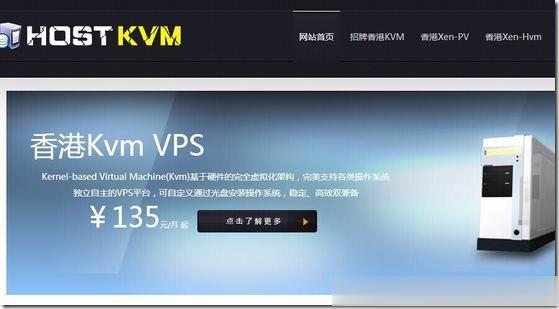运行ibm mainframe期末复习
I . z/os
1. data set name, temporarydataset, symbol ic variable
1) Data setsarethefi lesthatcontain programsanddata
2) A data set namecan be one name segment,or a series of joined name segments.Each name segment represents a level of qual ification. For example, the data setname STU237.SEU.JCL is composed of three name segments. The first namesegment on the left is cal led the high-level qual ifier (HLQ), and the last namesegmentonthe right isthe lowest level qual ifier (LLQ).
3) Segments or qual ifiers are l imited to eight characters, the first of which must bealphabetic (Ato Z)or special character (#,@, $).The remaining seven charactersareeitheralphabetic (a-z), numeric(0-9), special,or a hyphen (-).Name segmentsare separated bya period (.).
4) Including al l name segments and periods, the length of the data set name mustnot exceed 44 characters
5) injcl :
&Toidentify a symbolic parameter.ex.&LIB
&&To identify a temporary data setname.ex.&&TEMP1
6) TemporaryData Sets:The namestarts with two ampersands(&&)fol lowed by 1 to8characters.ex.//step1 DD dsn=&&temp01
2. IBM uti l ityprogram: IEFBR14, IEBGENER, IEBCOPY, IDCAMS
1) Utilities are pre-written programsthatperform commonlyneeded functions.Useuti l ityprogramstoassistyou inorganizingand maintaining data.Data Set Uti l ityPrograms:Youcan usedata set uti l ity programsto copy,move,reorganize, change,orcomparedata atthedata set or record level .Data Set Uti l itiesstart with IEBxxxxx
2) IEBCOPY: tocopy, compress,or mergepartitioneddata setsor PDSEs.
IEBGENER:Copy records from asequentialdata set or convert a data setfrom sequential organizationtopartitionedorganization.
IEFBR14:Dummy uti l itya. IEBCOPY(Li brary Copy) Program:
-Copy partitioned data set(PDS). (ISPF3.3 inbatch mode)
-Copy partitioned data set members.
-Compress partitioned data setsin place.
-Make a copyof a partitioned data set.
-Merge partitioned data sets.
-Create a sequentialform of a PDSfor backuportransport.
-Copyand re-blockload modulesb. IEBGENER
Use IEBGENERtocopyone sequentialfi letoanother. (ISPF 3.3in batchmode)
Toprint sequential data setsormembersof partitioned data sets.
Tocreate partitioneddata set membersc. IEFBR14
IEFBR14isa nul lprogram. Itdoesnothing it executesa singlestatement,which specifiesthe end ofprogram.
It’susedasa dummystep,ortoal locate/delete data sets
3) I D CA M S主要用于创建和操作VSA M数据集和目录操作
3. LPAR iswhat?Why use it?
1) Logical PARtition
2) 实际上是指通过虚拟手段一组逻辑上独立的资源可以用来运行一个系统逻辑上可以看成一个独立的计算机。大型机操作系统总是在LPAR模式中运行即使一台大型机只运行一个OS。 LPAR可以运行各种系统不必是z/OS
3) why?a. Logical partitions are, in practice,equivalentto separate mainframes. EachLPARruns its own operating system(OS).b. Reduce number of servers(mainframes).c. Running different OS.d. Running differentversions of OS
4. z/ossubsystem and component: JES,TSO, ISPF,SDSF,RACF
1) RACF(Resource Access Control Faci l ity) is az/OS security subsystem
2) TSO/E(Time Sharing Option/Extensions).
• ISPF(Interactive System Productivity Faci l ity).
• TSO/E and ISPF al low you to log on to the z/OS system,run programs, andmanipulatedatafi les
3) JCL(Job Control Language) is usedtosubmit batchjobtoz/OStoexecute
4) JES(Job Entry Subsystem)receive jobs into the operatingsystem, to schedule themforprocessing“by z/OS,and tocontrol th”eir output processing
5) SDSF: IBM的 系统显示与查询工具 简称SDSF是OS/390的可选产品可以向用户提供大量的信息以协助用户监测、管理以及控制MVS/JES2系统
5. logical record, physical record,why blocking?why a physical record contains manylogical records
1) A record is a fixed number of bytes containingdata and is the basic unit ofinformation used bya program running on z/OS
2) A logical record is a unit of information(for example, a customer, an account,apayrol l employee, and so on). It is thesmal lest amount of data to beprocessed,and it is composed of fields that containinformation recognized bytheprocessingappl ication program
3) Logical records are grouped within physical records named blocks. BLKSIZEindicatesthe lengthof those blocks
4) block为了节省ioand save space
6. z/osmasterand usercatalog,what kindof information saved incatalog?
1) A catalog records the location of fi les.When a data set is cataloged, it can bereferred to by name without the userneeding to specify where the data setisstored
2) To find a data set that you have requested,z/OS must know three piecesofinformation:
1.Data setname.
2.Volume name.
3.Unit (thevolumedevicetype, suchasa3390 diskor3590tape)
•A catalog is used to store and retrieve theUNITand VOLUME information of adataset.
3) A typical z/OS system uses one master catalog and numerous usercatalogscon nected to ita. The master catalog usual ly stores only thesystem data sets and name of theusercatalogs.b. The usercatalog stores userdata sets.c. Thiswi l l makemigration(迁移)mucheasier
7. characteristicof sequential data set and partitioned data set,directoryblock
1) Asequential data set(PS) consists ofone or more recordsthat are stored inphysicalorder and processed in sequence. New records are appendedto the end of thedata set.
2) A partitioned data set(PDS) is a col lection of sequential datasets, cal ledmembers.Eachmember is l ike a sequential data set and hasa simple name,whichcan be upto eight characterslong
3) directoryblockstoresthe entryof each members
8. JCLcoding rules, howtocontinue tonext l ine
1) JCL is used to tel l the system what programs to execute,what datasetstheseprogramswi l l use,what isthedisposition of data setswhen theprogram executionends.
2) Format of JCLStatements(noperiod)a. Identifier field: Indicates to the systemthat a statement is a JCL statementratherthandata.Columns1and2of al l JCLstatementscontain//.b. Name field:The name is1 through 8 alphanumeric or nationalcharacters($,#,
@).can’tappearatColumns1and2c. at least one space between name field and operation fieldd. Operation field:The operation fieldspecifiesthe type of JCL statement.e. at least one space between operation field and parameter fieldf. Parameter,or operand field:Containsparameters separated bycommas.
3) When the total length of the fields on a controlstatement exceeds 71 columns,continuethefields onto the next line.a. Interrupt the field after a complete parameter or subparameter, including thecommathatfollows it,atorbeforecolumn 71.b. Code // in columns 1 and 2 and a blank character in column 3 of thefollowingstatement.c. Continue the interrupted parameter or field beginning in anycolumn from 4through 16.ContinuingJCL Statements
9. basicJCLstatement—JOB&EXECcard
1) You enter a program into theoperating system to execute as a job step.Ajob stepisidentified byan EXECstatement.
2) Ajob is a collection of related job steps.Ajobis identified by a JOB statement
3) JOB-Providesa name(jobname)tothesystemforthisbatchjob.a. //jobname JOB parameters, parametersMarks the beginningof a job,assignsa nametothejob
1. Eachjobname should be unique.(can havethesamejobname)
2. Thejobnamemust beginincolumn 3.
3. jobname is 1 through 8 alphanumeric (A-Z,0-9) or national ($, #,@)characters.
4. Thefirst character must be alphabetic or national ($,#,@).
5. Thejobname must befol lowed byat least one blank.
b. Usejust onlyone,toseparate parameters
1. NOTIFY=Sends notification of job completionto a particular user, such asthesubmitterofthejob.
2. CLASS=Directsa JCLstatementtoexecute on a particular input queue.
3. MSGCLASS=Directsjoboutputtoa particular output queue.
4. MSGLEVEL=Controlsthe number of systemmessagesto be received.
4) EXEC-Providesthe name of a program toexecute. Each EXECstatementwithin thesame job is ajob step.a. The EXEC statementmarks the beginning of each job step in ajob or aprocedureb. //stepname EXEC parameters,parametersc. A stepname is optional .When a stepnameis needed, it must be unique withinthejob.
1. The stepname is 1 through 8 alphanumeric or national characters ($, #,
@).
2. Thefirst character must be alphabetic or national character ($,#,@).
3. The stepname must befol lowed byat least one blank.d. An EXECstatement must contain oneofthe positional parameters:PGM,PROC,or procedure name.
1. Use the PGM parameter to name the program that the system istoexecute.a. Exampleof the PGM Parameter:
//STU278A JOB CLASS=A,…
//STEP1 EXEC PGM=LAB1
2. Use the PROC parameter to specifythatthe system isto cal l and executeacataloged or in-stream procedurea. Examplesof the PROCParameter:
1.//STEP1 EXECPROC=MYPROC
2.//STEP2 EXECMYPROC
3. JCL procedure(PROC)a. Some programs and tasks require a larger amount of JCL than a usercan easi lyenter. JCL for these functions can be kept in procedurel ibraries. Such a procedure is sometimes known asa cataloged
5) DD-The Data Definition provides inputsandoutputstothe execution program onthe EXECstatement. This statement l inks a data set orother I/O device to addnamecodedintheprogram
10. JCLspaceand dispof“DD”statement
1) //ddname DD parameters,parametersa. Theddname specifiesthe nameof the DDstatement.
1. 1through8alphanumeric ornational ($,#,@)characters.
2. Thefirst character must be alphabetic or national ($,#,@)b. Temporary Data Sets:The name startswith twoampersands (&&)fol lowed by 1to8characters.ex.//step1 DD dsn=&&temp01
2) DISP=Data setdisposition(安排), suchaswhetherthe data set needsto becreatedoralreadyexists,andwhetherthe data setcan beshared bymorethan one joba. NEW-Anewdata set istobecreated inthisstep.b. OLD-The data set exists before this step and thatthis step requires exclusive
(unshared)use of thedata set.c. SHR-The data set exists beforethis stepandthatotherjobs can shareit, that is,
use itatthesametime.d.MOD- Indicatesone of thefol lowing:
1. The data set exists and records are to be added to the end of it.The dataset must be sequential .
2. A new data set is to be created. In either case,MOD specifies exclusive
(unshared)use of the data sete. DELETE-thedata set istobe deleted if thisstepterminatesnormal ly.f. KEEP-thedataset istobe kepton thevolumeif this stepterminatesnormal ly.g. PASS - the data set is to be passed for use bya subsequent step in the samejob.h. CATLG- if the stepterminates normal ly, thesystem isto place an entrypointingtothe dataset inthesystem or usercatalog.i . UNCATLG- if the stepterminatesnormal ly, thesystem isto delete(1)the entrypointingtothedata set inthesystem orusercatalog.
3) SPACE= al locate storage space for new data sets on DASD.The SPACE parameterhas no meaning for tape volumes. Total space wi l l be al located: 1primaryextentand upto 15secondaryextents.a. Ex.Al locate a PS data set:
//SPACE=(TRK,(5,2))
*Maximum al location 35tracks(15*2+5=35), no directory specified for PS.b. Ex.Al locate a POdata set:
//SPACE=(CYL,(2,1,5))
*Maximumal location 17cyl inders(15*1+2=17),5 isthe directory block.I I . COBOL
1. COBOL syntax
1) COBOL program Layout(Each sentence endswith a period)a. COBOL programfol lowscertain rules:
Column 1-6: reserved for l ine numbering.
Column 7: continuation or indicator area.An * in column 7 indicates acomment l ine.
Column8-11:area A.
Column 12-72:area B.
Column 73-80:program identification.b. Eachsentenceendswitha period.
2) COBOL programsare broken intofourdivisions.a. IDentification Division.b. Environment Division.c. Data Division.d. Procedure Division.e. Each division divided intoSections,eachSection divided into Paragraphsf. divisions->Sections->Paragraphs
3) IDENTIFICATION DIVISION identifies theprogram name to the compi ler.Must bethefirst division in every COBOL sourceprogram.a. PROGRAM-ID section
b. DATA-WRITTEN sectionc. AUTHOR section
4) ENVIRONMENT DIVISIONa. Configuration Section(rarely used.)b. Input-Output Section
1. I-O Control paragraphs(rarely used.)
2. File-Control paragraphs(always used)describesthe use of data fi les in the
COBOL program.
5) DATA DIVISION Describes the data used by the program. The DataDivision isbroken intothe fol lowing sections:a. FILE SECTION. -Defines the fi les being used bythe COBOL program and givesthe record-namesassociated with that fi le. (work with File-Controlparagraphsby FD statement )b.WORKING-STORAGE SECTION.Describesdata records that are not part of datafi les but aredeveloped and processed bya program.(self use)c. Linkage Section.–passes data between programs(cal l subprogram)
6) PROCEDURE DIVISIONis where the program’sprocessing occurs. It’s made up ofSections and Paragraphs.But sections usual ly not used.a. It mustcontainat leastone paragraph.b. The paragraph name beginsinarea A.c. Programming statements,orsentences beginin area B.
(其中input-fi le是cobol data要在COBOL中定义 indata是外部fi le要在jcl中定义)
7) WithCOBOL, al ldata,paragraph,andsectionnamesmay be upto30characters
2. val idCOBOL data name
- 运行ibm mainframe期末复习相关文档
- inunderstandingNew mainframe operating system curriculum teaching reform practice
- 灰尘如何清理主机里的灰尘(How to clean the dust in the mainframe)
- 故障电脑主机故障引起的黑屏故障(Black screen failure caused by computer mainframe fault)
- 除尘计算机主机除尘·(Computer mainframe dust removal)
- 电脑主机电脑主机(Mainframe computer)
- 板卡如何进行电脑主机除尘及板卡维护(How to carry out computer mainframe dust removal and board maintenance)
HostKvm香港VPS七折:$5.95/月KVM-2GB内存/40GB硬盘/500GB月流量
HostKvm是一家成立于2013年的国外主机服务商,主要提供VPS主机,基于KVM架构,可选数据中心包括日本、新加坡、韩国、美国、俄罗斯、中国香港等多个地区机房,均为国内直连或优化线路,延迟较低,适合建站或者远程办公等。商家本月针对香港国际机房提供特别7折优惠码,其他机房全场8折,优惠后2G内存香港VPS每月5.95美元起,支持使用PayPal或者支付宝付款。下面以香港国际(HKGlobal)为...

RAKsmart(年79元),云服务器年付套餐汇总 - 香港 美国 日本云服务器
RAKsmart 商家从原本只有专注于独立服务器后看到产品线比较单薄,后来陆续有增加站群服务器、高防服务器、VPS主机,以及现在也有在新增云服务器、裸机云服务器等等。机房也有增加到拥有洛杉矶、圣何塞、日本、韩国、中国香港等多个机房。在年前也有介绍到RAKsmart商家有提供年付129元的云服务器套餐,年后我们看到居然再次刷新年付云服务器低价格。我们看到云服务器低至年79元,如果有需要便宜云服务器的...

云步云72.5元/月起云服务器,香港安畅/葵湾/将军澳/沙田/大浦CN2机房,2核2G5M
云步云怎么样?云步云是创建于2021年的品牌,主要从事出售香港vps、美国VPS、日本VPS、香港独立服务器、香港站群服务器等,机房有香港、美国、日本东京等机房,目前在售VPS线路有CN2+BGP、CN2 GIA,香港的线路也是CN2直连大陆,该公司旗下产品均采用KVM虚拟化架构。目前,云步云提供香港安畅、沙田、大浦、葵湾、将军澳、新世界等CN2机房云服务器,2核2G5M仅72.5元/月起。点击进...

-
pcllenchromefunctionscss设备ipadAnthemmy支持ipad城乡居民社会养老保险人脸识别生存认证重庆网通重庆网通上网资费目前是多少? 小区宽带接入类型的eaccelerator开启eAccelerator内存优化就各种毛病,DZ到底用哪个内存优化比较好。。。windows键是哪个windows 快捷键 大全itunes备份如何用iTunes备份iPhone